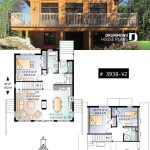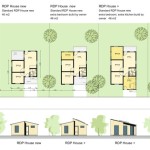Small Home Build Plans: A Comprehensive Guide
Embarking on the journey of building a small home presents both excitement and challenges. With careful planning and meticulous attention to detail, you can transform your dream home into a reality. This comprehensive guide delves into the essential aspects of small home build plans, empowering you to create a space that is both functional and aesthetically pleasing.
1. Site Selection and Preparation
The foundation of any successful building project lies in selecting the ideal site. Consider factors such as location, topography, soil conditions, and access to utilities. Ensure that the chosen plot is large enough to accommodate your desired home size, outdoor space, and future additions.
2. Design and Layout
The design phase is pivotal in determining the functionality and aesthetic appeal of your home. Collaborate with an experienced architect or designer to develop a layout that maximizes space utilization and natural light. Consider the flow of movement, room sizes, and placement of windows and doorways.
3. Building Materials
The choice of building materials has a significant impact on the durability, cost, and environmental impact of your home. Explore various options such as wood, steel, concrete, and eco-friendly materials. Each material offers unique advantages and disadvantages, so opt for the ones that best align with your budget, lifestyle, and sustainability goals.
4. Energy Efficiency
Small homes provide an excellent opportunity to prioritize energy efficiency. Incorporate energy-saving features such as insulation, double-paned windows, efficient appliances, and solar panels. By reducing energy consumption, you can minimize monthly utility costs and create a more sustainable living space.
5. Cost Considerations
Building a small home involves careful financial planning. Determine your budget early on and stick to it. Consider costs associated with materials, labor, permits, utilities, and landscaping. Explore potential cost-saving measures such as using prefabricated components, DIY projects, and seeking government grants or incentives.
6. Permitting and Inspections
Obtain the necessary building permits from local authorities before commencing construction. These permits ensure that your plans comply with building codes and safety regulations. Schedule regular inspections throughout the building process to verify adherence to plans and ensure quality workmanship.
7. Sustainability and Environmental Impact
In today's environmentally conscious era, it is essential to consider the sustainability of your home build. Utilize sustainable building materials, incorporate energy-efficient systems, and minimize waste production. By adopting eco-friendly practices, you can create a home that respects both the environment and future generations.
Conclusion
Building a small home involves meticulous planning, careful decision-making, and attention to detail. By adhering to the principles outlined in this guide, you can create a space that not only meets your immediate needs but also provides long-term comfort, functionality, and environmental responsibility. Remember that the journey of building a small home should be an enjoyable and fulfilling experience that results in a cherished haven you can call your own.

Floor Plans For Tiny Houses Besting A Frames Cabins Sheds Unique Small House Build Your Own

Small House Plans To Build Your Own Home

Plan 750 And 750s Small House Plans Home

Affordable Tiny House 18 X 28 Adu In Law Cabin Guest Small Home Plans And Blueprints

House Plans Modern Country Granny S Tiny Small Floor Cabin Cottage 1 Bedroom Plan 52 New Age To Build

27 Adorable Free Tiny House Floor Plans Craft Mart

42 Skippy 1 Bedroom House Plan Home Blueprints To Build Plans For

27 Adorable Free Tiny House Floor Plans Craft Mart

Small House Design 2024001 Pinoy Eplans Floor Plans

House Plans How To Design Your Home Plan








